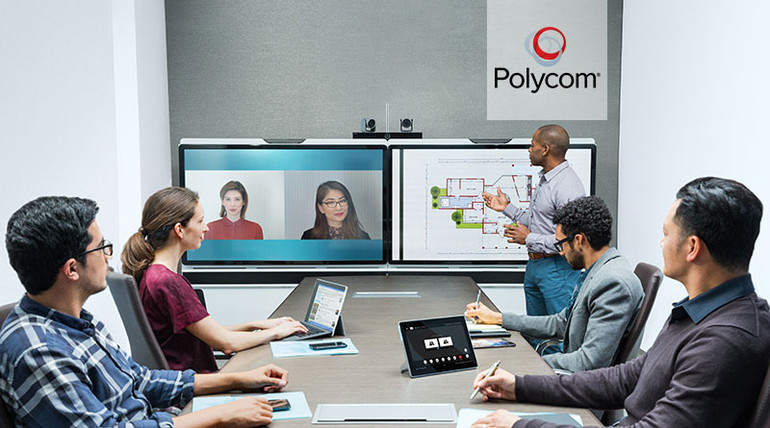Polycom EagleEye Director II combines the functionality of two popular Polycom video conferencing peripherals: Producer and Director. Using two Polycom EagleEye IV 12x cameras, the EagleEye Director II automatically controls the conversation, so your team can sit back, talk, and get business done.
In its standard configuration, the EagleEye Director II uses one of the two cameras to zoom in on and frame the active speaker. The other camera is kept ready to pick up the next speaker.
There are, however, ways to customize your tracking setting for the Polycom EagleEye Director II. You can control whether it frames the speaker or the group, the speed at which it tracks, how close the framing is, and even set it to picture-in-picture.
How? Read on.

Changing Tracking Settings on Polycom EagleEye Director II
To access the settings for the Polycom EagleEye Director II, go to on of these locations in your Polycom Group Series back-end:
- Local interface: Settings > Administration > Camera Tracking > Settings
- Web interface: Admin Settings > Audio/Video > Video Inputs > General Camera Settings
Here, you’ll find four settings that you can configure.
Tracking Mode
Choose what you want the camera to frame. Your choices are “Frame Speaker,” “Frame Group,” or “Off.”
“Frame Speaker” is the default setting. The Director II picks out the active speaker and frames them with one of the cameras, and the second camera picks out the next. The picture changes between the two feeds.
“Frame Group” means everyone’s in the picture frame. It can be very useful in some circumstances, for example, a legal teleconference where you want the client and their lawyers in the same picture.
“Off” means you set the camera manually.
Tracking Speed
Your choices are “Slow,” “Normal,” and “Fast,” with “Normal” being the default.
This is down to your organization’s preference. If you’d prefer the tracking to go a bit faster, choose “Fast.” If it’s too distracting at the default speed, choose “Slow.”
If people in your organization tend to talk over each other, you might find that “Slow” is preferable, because it can be a bit less chaotic.
Framing Size
How close do you want the picture? Your choices are “Wide,” “Medium,” and “Tight.” This is a personal preference thing.
The amazing thing about the EagleEye Director II is that you get video conferencing at a news-broadcast quality with no effort. Some news programs like to fill the frame with the speakers’ heads, while others prefer to see more of the body.
If participants use a lot of hand gestures, you’ll want a wider shot. Video conferencing improves on audio calls in part because you can see hand gestures.
Picture in Picture
You can either check or uncheck Picture in Picture.
The EagleEye Director II actually has three cameras: the two EagleEye IV cameras, plus an integrated analytics camera. By checking Picture in Picture, you’ll get a small picture from the analytics camera in the bottom right of the picture frame.
The default mode is to have the picture in picture there. If you don’t like it, uncheck it.
The analytics camera always picks up the whole group.
In our blog post on Thursday, we’ll talk about how the analytics camera enables you to get the most out of your Polycom EagleEye Director II.

